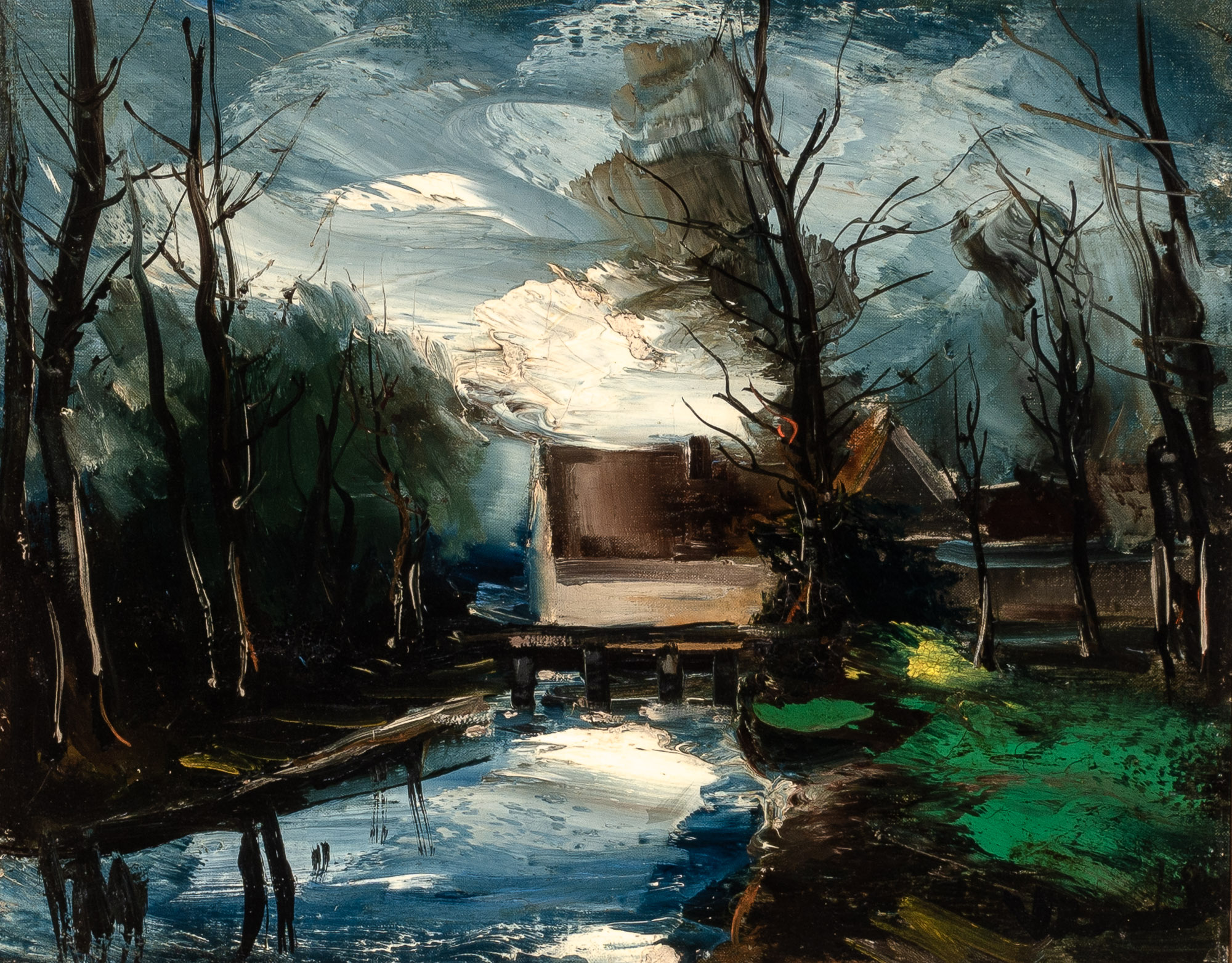
Maurice de Vlaminck
French, 1876-1958
Maurice de Vlaminck was a self-taught French painter best known for his bold, emotionally charged contributions to Fauvism. Working alongside Henri Matisse and André Derain, Vlaminck embraced a raw, instinctive approach to color and form, famously stating, “I try to paint with my heart and my guts without worrying about style.” His artistic breakthrough came in 1901, after viewing a Van Gogh retrospective in Paris, which profoundly influenced his approach to color and composition. That same year, he met Derain during military service, and the two began painting together in Chatou, forming a dynamic partnership that laid the groundwork for Fauvism. Vlaminck’s participation in the 1905 Salon d’Automne, where the group was famously labeled “Les Fauves”, marked his arrival at the forefront of avant-garde painting.
His technique was marked by aggressive brushstrokes and intense color, often applied straight from the tube, capturing landscapes, still lifes, and street scenes with liveliness. Vlaminck’s early work played a defining role in the development of Fauvism, a movement that rejected academic restraint in favor of expressive freedom.
His paintings have been exhibited in major institutions including The Museum of Modern Art in New York, the Musée d'Orsay in Paris, and the Tate Gallery in London. Vlaminck remains a central figure in the story of early modern French painting, celebrated for his uncompromising vision and powerful emotion.






